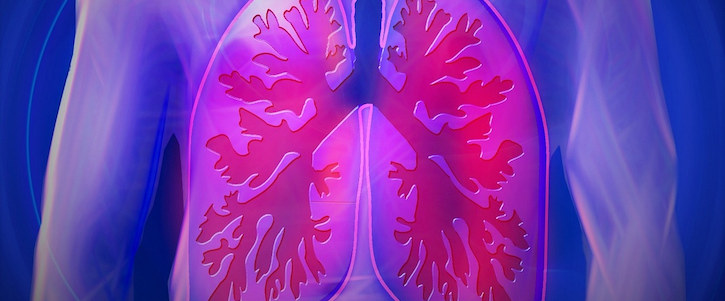Deep Learning Model Outperforms Clinical Model in Lung Cancer Survival Prediction
Using a deep learning model for lung cancer survival and outcome predictions can have potential clinical implications on adaptive and personalized therapy.

A deep learning model that used serial image scans of tumors from patients with non-small cell lung cancer predicted treatment response and survival outcomes better than standard clinical models, according to a study published in Clinical Cancer Research.
The models’ performance improved after each follow-up scan. The area under the curve for predicting two-year survival improved from 0.58 to 0.74 after adding all available follow-up scans.
Those classified as low-risk for mortality by the model had six-fold improved overall survival compared with those at high-risk.
The deep learning model was also more efficient in predicting metastasis, progression and locoregional recurrence compared with a clinical model, which incorporated stage, gender, age, tumor grade, performance, smoking status and clinical tumor size.
Hugo Aerts, Ph.D., director of the Computational and Bioinformatics Laboratory at the Dana-Farber Cancer Institute and Brigham and Women’s Hospital in Boston, Mass., and his research team built deep learning models to see if they could get more predictive insights as cancers evolve.
The team transferred learning from a neural network created by researchers at Princeton University and Stanford University and trained the models using serial CT scans of 179 patients with stage III non-small cell lung cancer.
Up to four images were obtained of each patient before treatment and at one, three and six months after treatment for a total of 581 images.
The team studied the model’s ability to make outcome predictions with two datasets — the training dataset of 581 images and an independent validation dataset of 178 images from 89 patients with non-small cell lung cancer who were treated with chemoradiation and surgery.
Patient outcomes can be improved by tracking tumor evolution for prediction and response after chemotherapy and radiation therapy.
Generally, clinical parameters are used to determine treatment type and to predict the outcome, however, this method does not account for phenotypic changes in the tumor.
Medical imaging allows for the tracking of lesions noninvasively and provides additional tumor characteristics.
The neural network made survival and prognostic predictions at one and two years for overall survival and with an increase in the number of timepoints and the amount of data available, the network performed better.
“Noninvasive tracking of the tumor phenotype predicted survival, prognosis and pathologic response, which can have potential clinical implications on adaptive and personalized therapy,” the authors wrote.
The authors added that AI-based noninvasive radiomics biomarkers are low cost and require minimal human input.
Get the best insights in digital health directly to your inbox.
Related
AI Diagnoses PTSD with High Accuracy